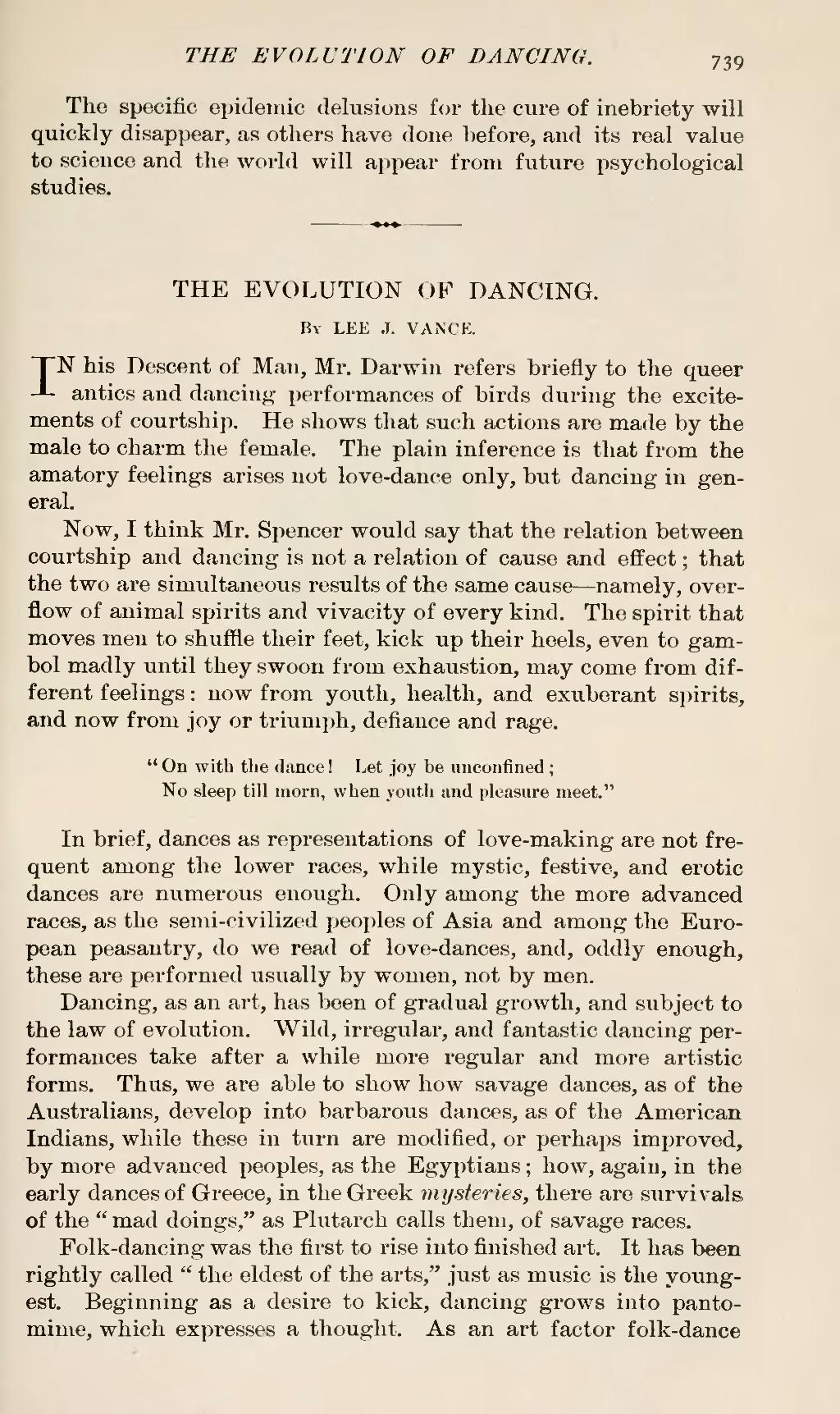The specific epidemic delusions for the cure of inebriety will quickly disappear, as others have done before, and its real value to science and the world will appear from future psychological studies.
| THE EVOLUTION OF DANCING. |
By LEE J. VANCE.
IN his Descent of Man, Mr. Darwin refers briefly to the queer antics and dancing performances of birds during the excitements of courtship. He shows that such actions are made by the male to charm the female. The plain inference is that from the amatory feelings arises not love-dance only, but dancing in general.
Now, I think Mr. Spencer would say that the relation between courtship and dancing is not a relation of cause and effect; that the two are simultaneous results of the same cause—namely, overflow of animal spirits and vivacity of every kind. The spirit that moves men to shuffle their feet, kick up their heels, even to gambol madly until they swoon from exhaustion, may come from different feelings: now from youth, health, and exuberant spirits, and now from joy or triumph, defiance and rage.
"On with the dance! Let joy be unconfined;
No sleep till morn, when youth and pleasure meet."
In brief, dances as representations of love-making are not frequent among the lower races, while mystic, festive, and erotic dances are numerous enough. Only among the more advanced races, as the semi-civilized peoples of Asia and among the European peasantry, do we read of love-dances, and, oddly enough, these are performed usually by women, not by men.
Dancing, as an art, has been of gradual growth, and subject to the law of evolution. Wild, irregular, and fantastic dancing performances take after a while more regular and more artistic forms. Thus, we are able to show how savage dances, as of the Australians, develop into barbarous dances, as of the American Indians, while these in turn are modified, or perhaps improved, by more advanced peoples, as the Egyptians; how, again, in the early dances of Greece, in the Greek mysteries, there are survivals of the "mad doings," as Plutarch calls them, of savage races.
Folk-dancing was the first to rise into finished art. It has been rightly called "the eldest of the arts," just as music is the youngest. Beginning as a desire to kick, dancing grows into pantomime, which expresses a thought. As an art factor folk-dance
